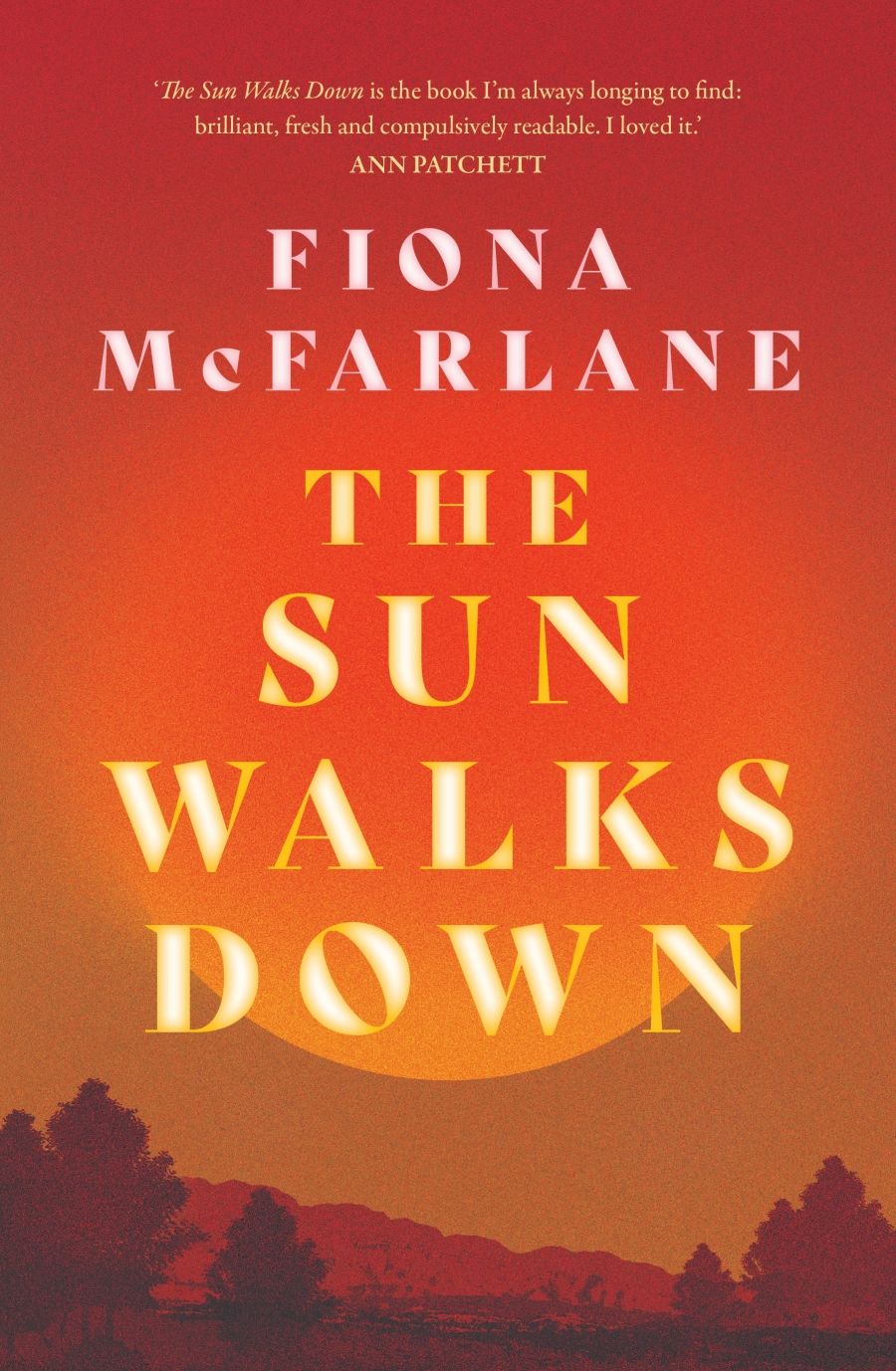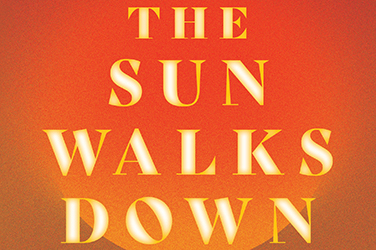
- Free Article: No
- Contents Category: Fiction
- Review Article: Yes
- Article Title: Big-picture questions
- Article Subtitle: Fiona McFarlane’s panoramic fiction
- Online Only: No
- Custom Highlight Text:
Early in The Sun Walks Down, Mary Wallace – mother to six-year-old Denny, who has gone missing in a dust storm – throws her husband a ‘general look of bafflement at having found herself here, in this place, with these people’. It’s a symptomatic moment early in a novel that contains myriad displays of perplexity by various characters – at each other, at situations they create or must navigate, at the meaning of life.
- Featured Image (400px * 250px):

- Alt Tag (Featured Image): Patrick Allington reviews 'The Sun Walks Down' by Fiona McFarlane
- Book 1 Title: The Sun Walks Down
- Book 1 Biblio: Allen & Unwin, $32.99 pb, 416 pp
MacFarlane’s sprawling cast of characters crowd the page. They include, among others, Denny’s parents and sisters, his absent adult brother and his grandparents. McFarlane’s portrait of Cissy, Denny’s oldest sister, is particularly fine. Cissy is a wonderer, a sceptic, an acute observer. She stands up to authority, especially when it is at its most wrong-headed. McFarlane captures Cissy’s fierceness, desire for knowledge, ambition, and contempt for the foibles and failures of adults, without falling into the trap of making her infallible or magically capable.
Other characters in the district include a matriarch whose adult sons have usurped her authority: ‘It’s been quite startling to Joanna … to hold so little sway in her own household, and so suddenly.’ There is Billy, an Aboriginal man who has worked for and with Denny’s parents for many years. Denny’s father, Mathew, rarely refers to Billy’s ‘blackness’, preferring to ‘operate on the principle that the less he acknowledges it, the more likely it is to go away’. There is a police officer, Sergeant Foster, who arrives from the north to take over the search for Denny from the local constable – and, more importantly from Foster’s perspective, to find the subject of his next book, to make history and myths in real time. And there is a husband and wife travelling north, creating art. He is Swedish and intimidated by the sky, she is English and determined to prioritise art. To the locals, he is the artist and she is his wife.
There are many other characters, from bartenders to teachers to Afghan cameleers to Irish and Aboriginal maids. McFarlane’s portraits are precise and deft; the inner worlds she offers are revelatory. Some characters are abbreviated, as if necessary but incomplete pieces of a panoramic view. Only Mr Daniels, the hapless vicar, slips towards caricature. At a wedding breakfast after the dust storm, he faints; in his efforts to help with the search for Denny, and to support the family, he seems most useful when unconscious.
McFarlane’s third-person narration continually shifts its gaze from character to character. To this discursive approach, she adds periodic bursts of first-person commentary, delivered by different, sometimes minor, characters. These first-person interruptions add more discursiveness. But they also help emphasise a wide mix of experiences and world views, reinforcing that there is no single version of the story about the people, their lives, and the land they live on.
If the plot serves McFarlane’s panorama of people, the many characters help her lay out political, cultural, and social themes, and to challenge an ordered and simplistic version of the past. She examines big questions about colonisation, the centrality of the Christian God in the creation of South Australia, multiculturalism, and gender and labour:
The day opens and it closes and Mary is making beds, cooking meals, feeding animals, brushing hair, mending dresses, sweeping floors, writing letters, washing shirts, wringing sheets, churning butter, dressing children, straining milk, clearing tables, knitting socks, fetching water, hoeing the garden and darning stockings.
Most significantly, the book undermines the wishful thinking that ‘settlement’ in South Australia was a gentle, moderate undertaking. The town of Fairly and its surrounds are built on an ongoing foundation of racism and exploitation. McFarlane shows this plainly, without over-simplification; she also presents a tangle of official and unofficial agency and authority, not least between white employers and Aboriginal workers.
I may be reading too much into what is a historical novel, but one achievement of The Sun Walks Down is that it captures something of the muted essence of South Australia – in the twenty-first century as well as in colonial times.
McFarlane achieves this partly by the way she depicts and uses the landscape, the space, the dust, the unrelenting dry heat, the description of distant Adelaide as ‘that charming, airless town’. She also undermines conventional assumptions about progress, and makes use of an assortment of characters who grapple, each in their own way, with a mix of conformity, even piousness, and free-thinking.
At one point, Billy thinks, ‘A lost child is the thing white people are most afraid of. It’s the one cost of settling on this country that they consider unreasonable.’ The Sun Walks Down is partly about whether Denny returns to his family. More than that, it is about how people he knows act and think and dream.


Comments powered by CComment